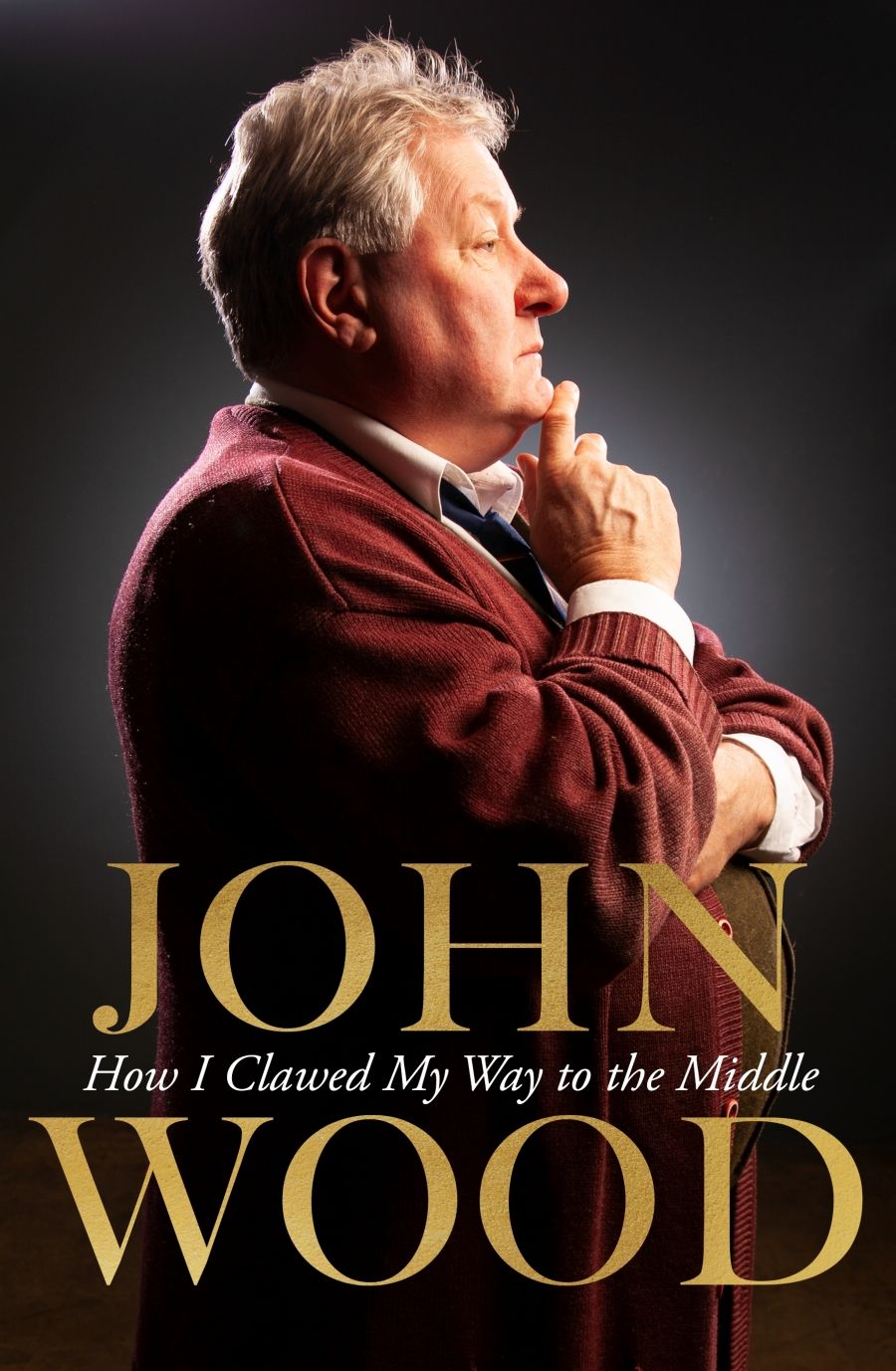
- Free Article: No
- Contents Category: Memoir
- Review Article: Yes
- Online Only: No
- Custom Highlight Text:
To his obvious surprise, John Wood became a household name playing ordinary, reliable Aussie blokes – most memorably Sergeant Tom Croydon on Blue Heelers and magistrate Michael Rafferty on Rafferty’s Rules – two of television’s best-loved everyday heroes. (I confess to writing about the latter in The Bulletin and describing him as ‘the thinking woman’s crumpet’.)
- Grid Image (300px * 250px):

- Book 1 Title: How I Clawed My Way to the Middle
- Book 1 Biblio: Viking, $34.99 pb, 308 pp
- Book 1 Readings Link: booktopia.kh4ffx.net/7Amk5
Wood’s twinkly grin and gravitas on television and stage have made him a fixture in the contemporary public eye, so it’s startling to realise that his childhood was the dunny cart, the ice man, milk delivered from a ‘float’ and bread from the baker’s cart. Perceptively he observes of childhood: ‘Some memories slither away when you look them in the eye, leaving you uncertain as to whether you actually own them.’
Wood’s landscape and memories of growing up – working-class, outer-suburban, forgettable school days and all – are more satisfying than the inevitable rollcall of ‘names’ and showbiz tales that come later. He neatly knits together a reminiscence of an otherwise forgettable high-school French farce with more recent memories, including an appearance in Yasmina Reza’s Art. He recalls William McInnes ‘fart-arsing around’ in the wings while Wood was about to utter his opening line. It was a moment of realisation that he was at home and where he should be – on stage at the Victorian Arts Centre. Starring roles at Melbourne Theatre Company – and all Australia’s major companies – were years in the future when the unlikely thespian sang the only song he knew – a fey ditty from Trial by Jury – at his audition for NIDA. To his surprise, he was awarded a scholarship worth $6 a week. It was a pittance even then, but that wasn’t the point: he was in.
Again, his very Australian life and family are what immediately capture attention. Not wanting to burden his hard-working parents, he knows he must work to save for the move to Sydney. His dad helps him get a job at the Footscray abattoir where he has toiled since returning from the war. It is a dreadful irony that this ex-soldier – who suffered physically from his war experience for the rest of his life – took on and stuck at, for the sake of his young family, a job that must have been excruciating. Wood’s graphic documentary-stark account of that hellish place is the book’s best and most arresting writing, and especially memorable given the high pandemic profile of abattoirs. The recall is at once personal, dispassionate, and analytical.
Wood maintains that rich mix – personal, analytical, dispassionate – throughout the book as he and Leslie, his girlfriend and later wife, settle into a succession of Randwick rentals while he progresses through NIDA and she through UNSW. At the same time, his mordant humour and memory for slights and perceived bad behaviour provide an acidic edge amid much sharp observation. Various people are described as ‘a bit of a prick’, someone else is ‘an arsehole, really’, while in the chapter titled ‘On Acting’, he immediately says: ‘I honestly don’t know what possessed me to create this heading. I don’t have the faintest idea about the subject.’ Much later, he ranges knowledgeably across the craft and also takes a cudgel to method acting while writing about an irritating guest actor on Rafferty’s Rules.
Wood is adept at painting word pictures with depth and perspective. His accounts of the early days of the Nimrod in Sydney, and of working for the patrician John Sumner in Melbourne, are delightful and informative. At the same time, he seems comically preoccupied with height: Joanna McCallum for instance, is very tall, as are a number of others. Someone else is very short. Height or its absence is a droll preoccupation for a substantial man who has been a stalwart of Australian theatre for fifty-plus years.
Although Wood is now more widely known for his television work, this came later. In 1981 he appeared in Jim Sharman’s Lulu in Adelaide, then at the Sydney Opera House. Judy Davis played Lulu; other luminaries included set designer Brian Thomson, lighting designer Nigel Levings, and costumier Luciana Arrighi, in an adaptation by Louis Nowra. Sharman invited Wood to join his new ensemble, Lighthouse. So the Woods moved from Melbourne to the Adelaide Hills. He is candid about the cost of an actor’s life for a family. He missed a lot of his two girls’ childhoods to Blue Heelers and Rafferty’s Rules. His grandchildren are now getting the attention: he delights in discovering what he missed.
His second tranche of massive household fame came as Sergeant Tom Croydon in Blue Heelers. Wood writes astutely: ‘the place where most people come into conflict is a police station, a hospital, doctor’s surgery, church or courtroom. That’s why so much television is set in such places. They’re where we meet the gods and demons of our modern age.’
John Wood has made himself a unique place in the performing arts. With humour, bile, insight, and seeming candour, How I Clawed My Way to the Middle describes how, why, and where he did it. It’s the antithesis of the ‘star’ biography, and Wood is true to his roots. It tells as much about Australia as it does about the author.


Comments powered by CComment